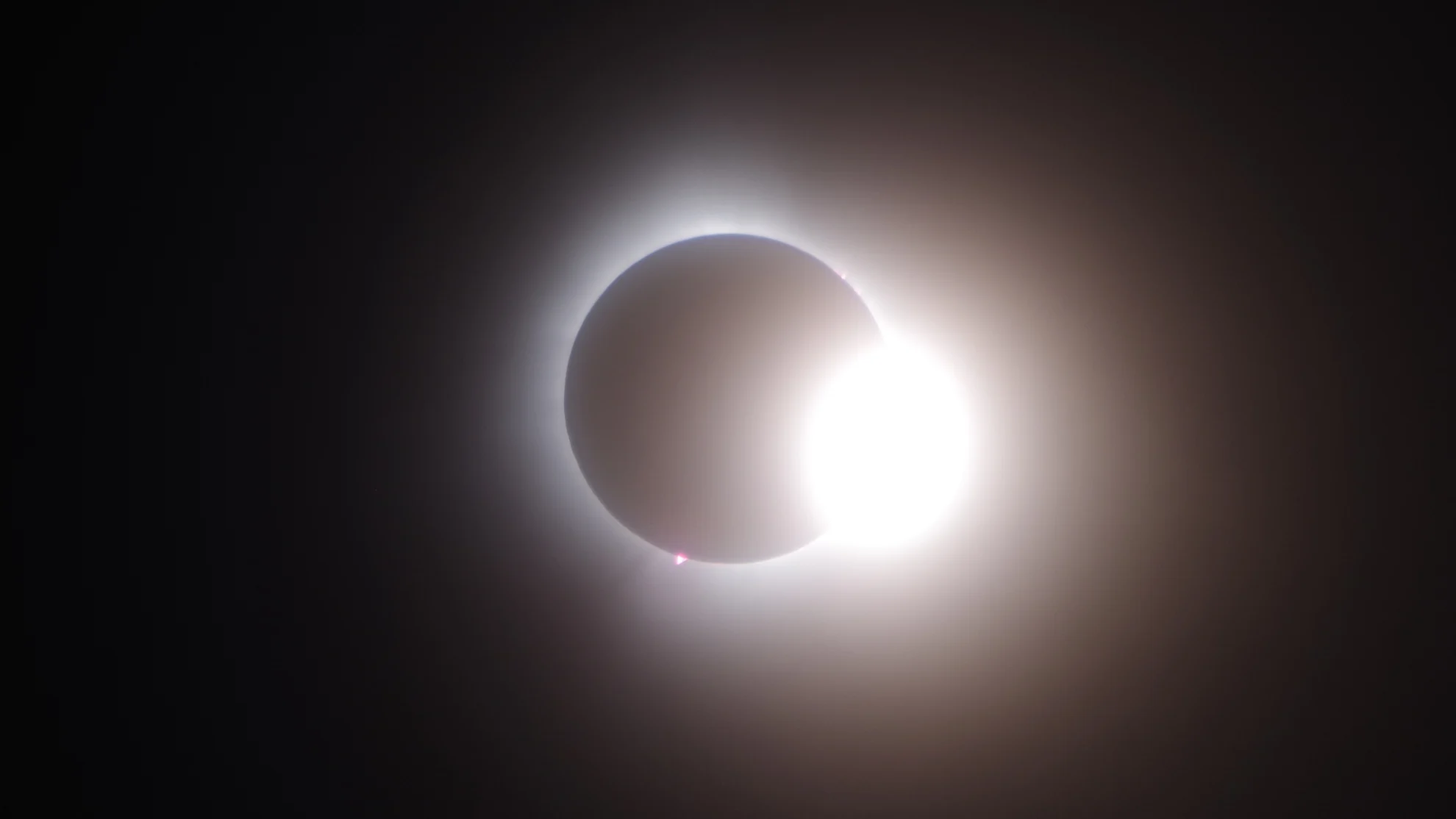
Was that a solar flare? What did we see during the April 8 total solar eclipse?
The total solar eclipse was a spectacular event, but what were we actually seeing?
Just as the Moon completely covered the Sun during the April 8 eclipse, observers noticed an extremely bright point of light shining along the limb of the Moon. Was this a solar flare, and if not, exactly what was it?
Seeing the moment of totality during a total solar eclipse is a truly awe-inspiring experience. However, sometimes these events come with something a little unexpected.
As the Moon's shadow swept across Mexico, the United States, and Canada, those within the path of totality spotted something unusual — an exceptionally bright spot just along the silhouette of the Moon. There was some speculation that we may have witnessed a solar flare occurring, just at the perfect moment.

This photograph of the April 8 total solar eclipse captures the moment of the "diamond ring" just at the end of totality. Along the bottom left edge of the Moon's silhouette is a bright point of light. Credit: Michel Garand/UGC
However, this was not the case. No significant space weather was noted at that time. In fact, solar flares release so much energy that they usually aren't visible to the human eye. Nearly all of the light they release is in the ultraviolet part of the spectrum, and only extremely rare 'white-light' flares emit any significant visible light.
What we were actually seeing was a giant arc of solar plasma extending far enough away from the Sun's surface as to be visible around the edge of the Moon.
These arcs are typically called filaments. They show up dark against the surface of the Sun, but are bright when they hang off the limb of the Sun and are seen against the dark backdrop of space. That is when we tend to call them prominences.
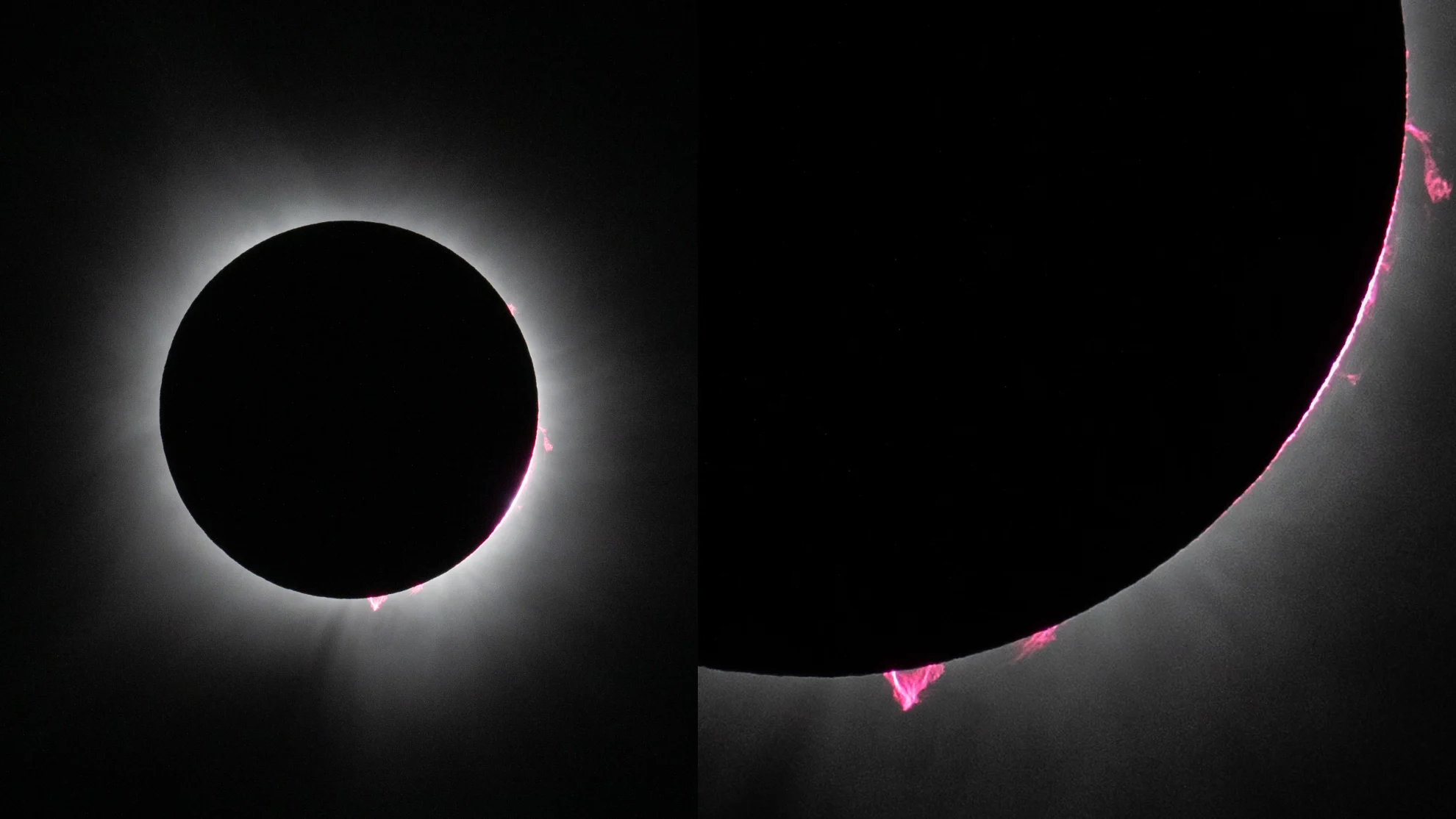
This composite image shows the April 8 2024 eclipse at totality, with a close-up look at some of the prominences that were visible at the time. Credit: NASA/Keegan Barber
Prominences and filaments are immense ribbons of ionized solar material, drawn away from the Sun's surface by powerful magnetic fields. They can contain billions of tonnes of material, can stretch tens of thousands of kilometres away from the surface, and extend for up to hundreds of thousands of kilometres across the Sun.
According to Dr. Ljubomir Nikolic, a research scientist with the Canadian Hazards Information Service of Natural Resources Canada, the reddish colour of these filaments comes from their temperature. With the corona reaching temperatures of up to a million degrees, it shines bright white. Filaments, on the other hand, are much cooler.
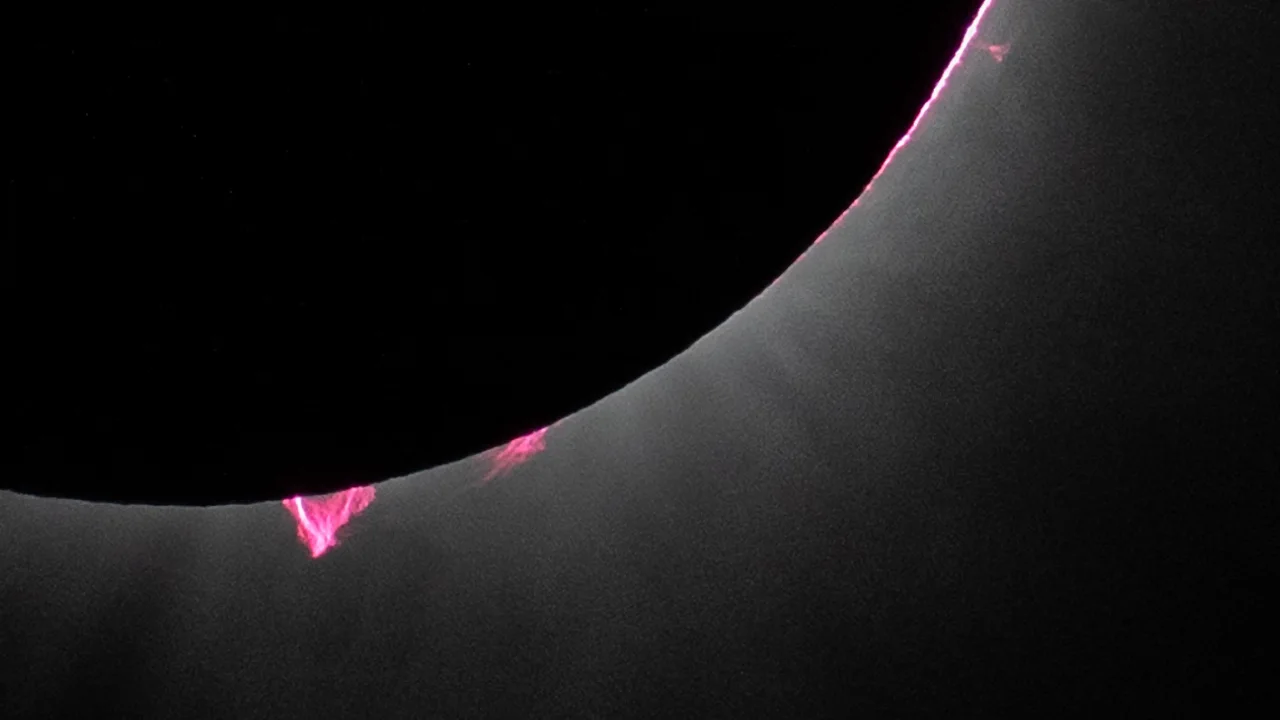
The large prominence at the bottom of this view was the one responsible for the bright point of light seen along the edge of the Moon during totality. Credit: NASA/Keegan Barber
Dr. Lidia Nikitina, another researcher at the Canadian Hazards Information Service, added context for this. She explained that while the solar surface is around 6,000 degrees Kelvin, the temperature of a filament tends to be about 4,000 degrees Kelvin.
So, while these are still extremely hot temperatures, they are much, much cooler than the solar corona.
As for the corona itself, it revealed the exceptional amount of solar activity occurring right now.
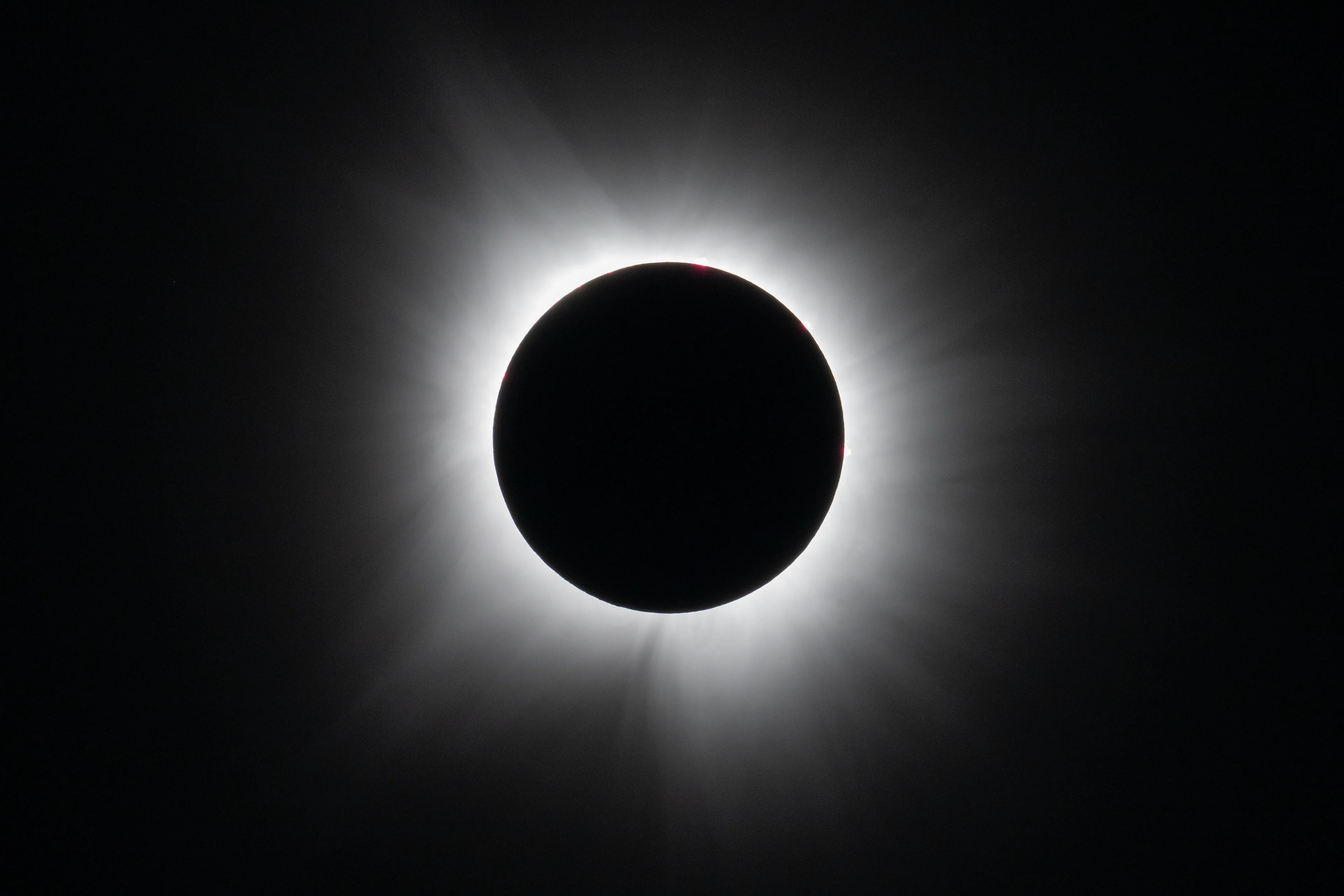
This view of totality highlights the amazingly bright and detailed corona that was visible during the April 8, 2024 total solar eclipse. Credit: NASA/Keegan Barber
But what gives the corona this bizarre appearance similar to a white shock of hair surrounding the Moon?
"The shape of the corona is basically the magnetic field of the Sun," says Dr. Nikolic.
The corona is fairly diffuse, especially compared to the dense plasma of a prominence. However, the ionized particles within the corona are still heavily influenced by the solar magnetic field. As the field extends away from the Sun, these particles travel along the field lines, which shapes them into these wispy formations known as streamers.
"And that magnetic field depends on the solar cycle," Dr. Nikolic added. "So it depends on how much our Sun is active."
Back in August of 2017, the Sun was about two years away from the minimum of Solar Cycle 24. In April of 2024, we are nearing the next solar maximum.
The differences between what we see now and during the August 21, 2017 total solar eclipse are quite striking.
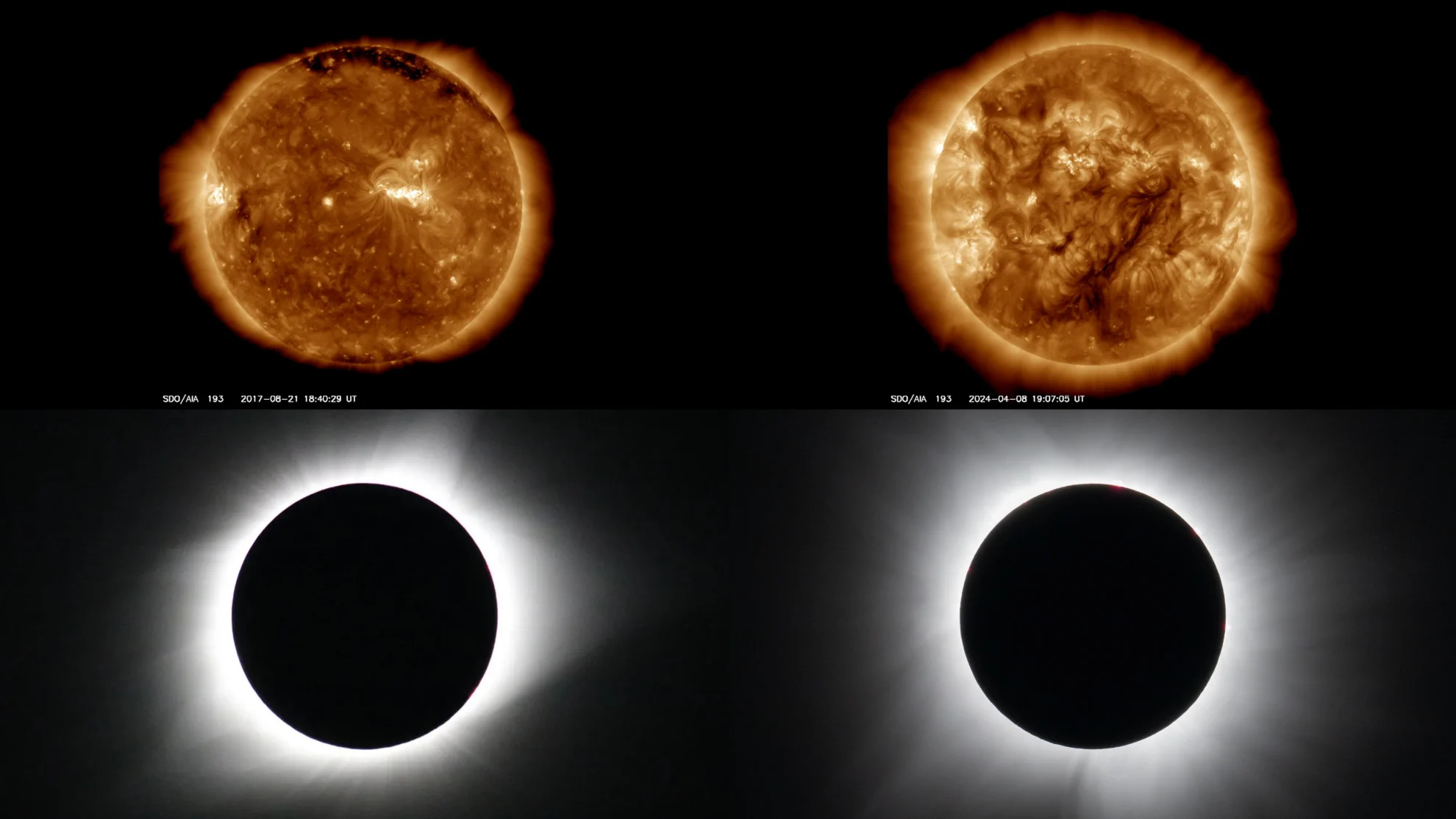
Two views of the Sun from the Solar Dynamics Observatory are shown in the top two frames of this image, from August 21, 2017 at top left and April 8, 2024 at top right, showing how much more activity there is currently. At the bottom, corresponding images of the solar corona during both eclipses show how the corona looked to us here on Earth. Credit: NASA SDO, NASA/Nat Gopalswamy, NASA/Keegan Barber
Every 11 years, the Sun goes through a cycle of activity. It starts out with just a few sunspots and a fairly sedate magnetic field. Over a period of about five to six years, this activity ramps up until it reaches a maximum. We see more sunspots, stronger and more frequent solar flares, and larger eruptions of solar matter (coronal mass ejections) throughout this period.
Once it reaches maximum, activity ramps down again for another five to six years until it reaches a minimum. The Sun can still produce fairly significant flares and CMEs during the latter half of its cycle, but these events still become less frequent over time.
The current cycle, Cycle 25, began in December 2019. Space weather scientists believe it will reach its maximum between November 2024 and March of 2026.
Special thanks to Dr. Robyn Fiori, Dr. Ljubomir Nikolic, Dr. Lidia Nikitina, and Dr. Kyle Reiter, from the Canadian Hazard Information Service at Natural Resources Canada, for providing their insights into the Sun, solar activity, and what this total solar eclipse revealed to us.
Header image courtesy Michel Garand, who captured this view of the April 8 total solar eclipse 'diamond ring' from Salaberry-de-Valleyfield, QC, and uploaded his photograph into our UGC gallery.






